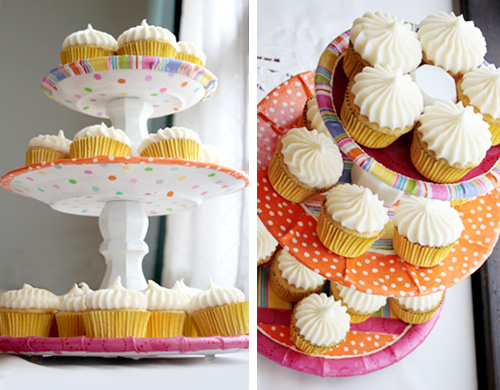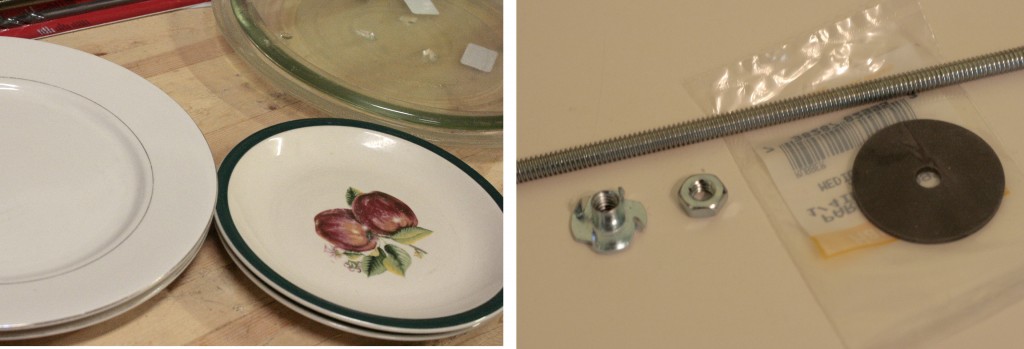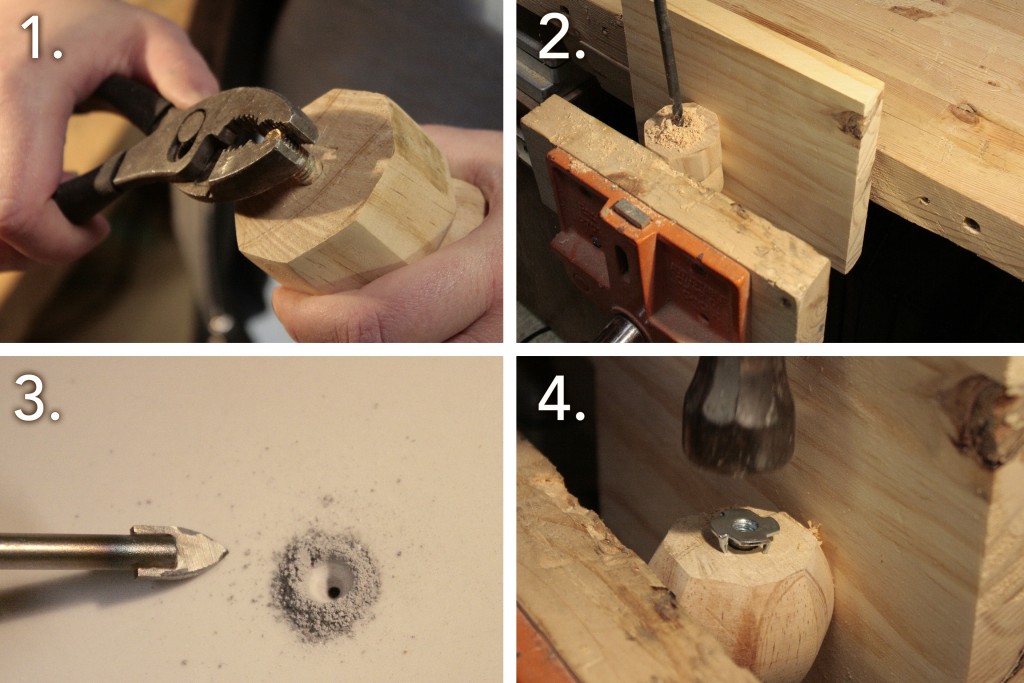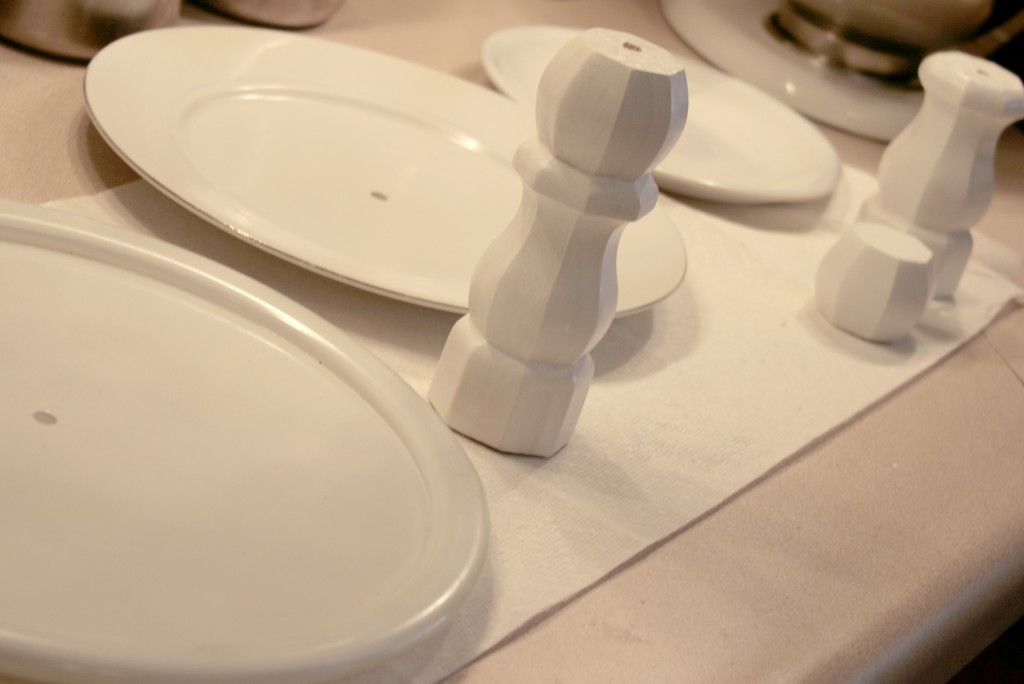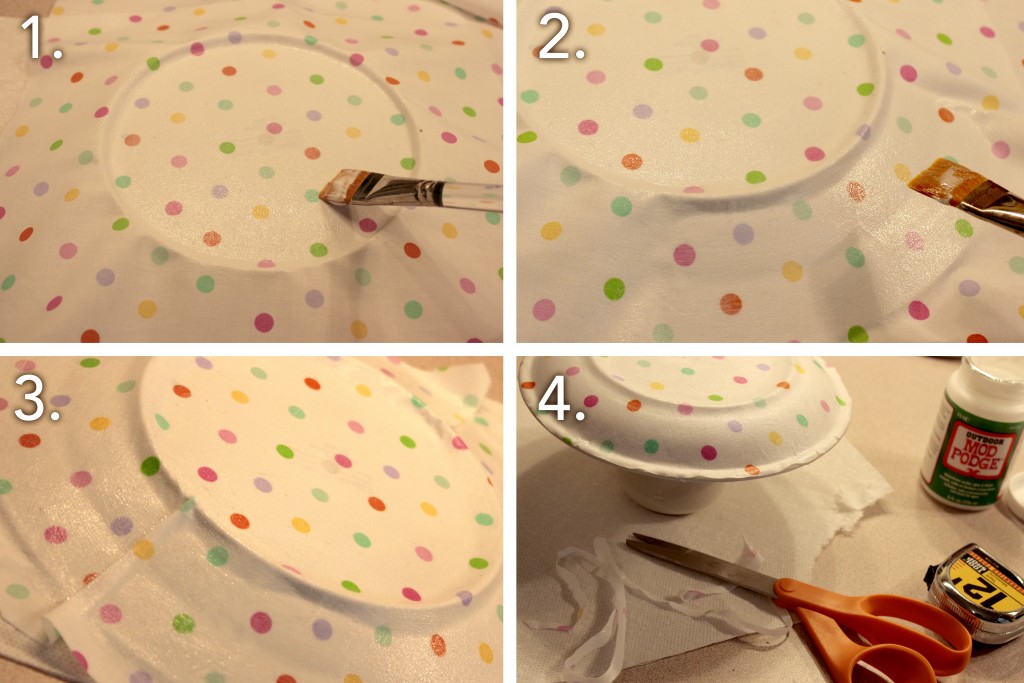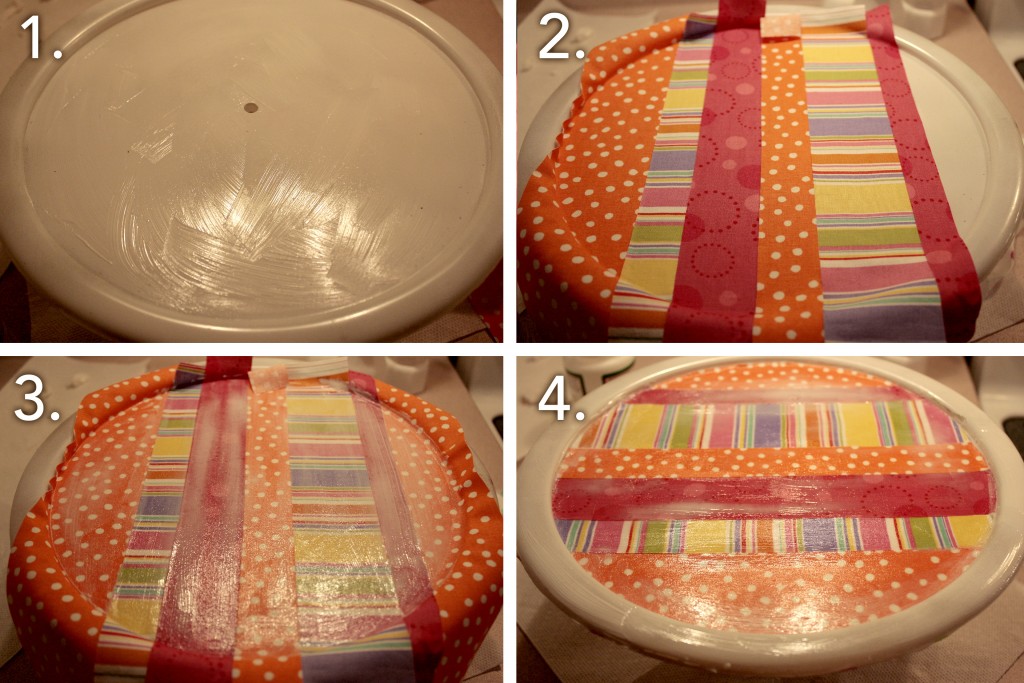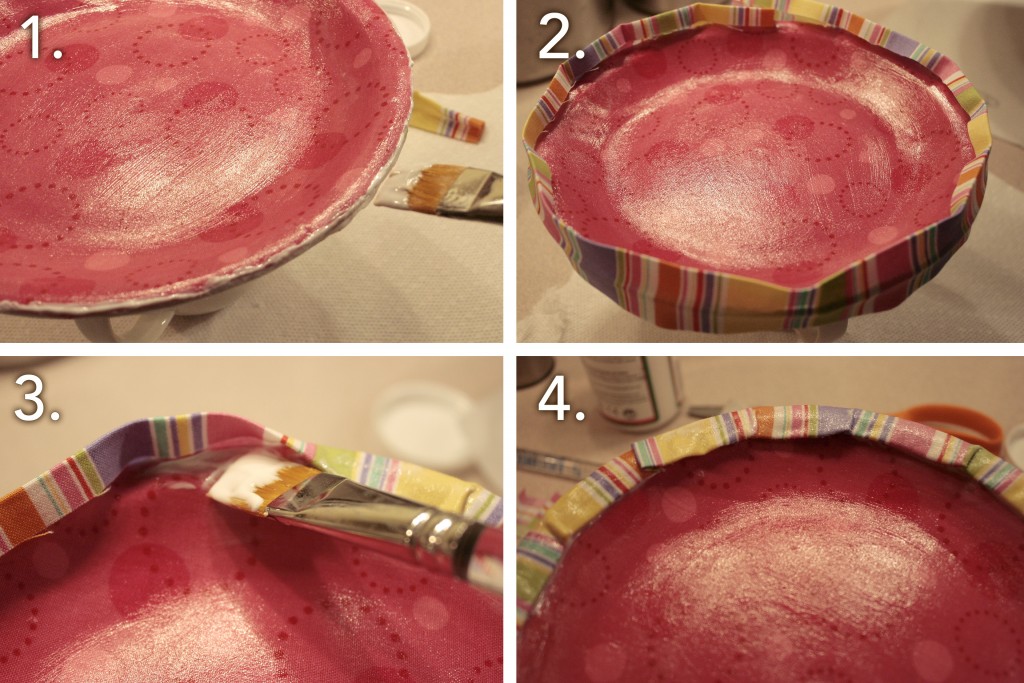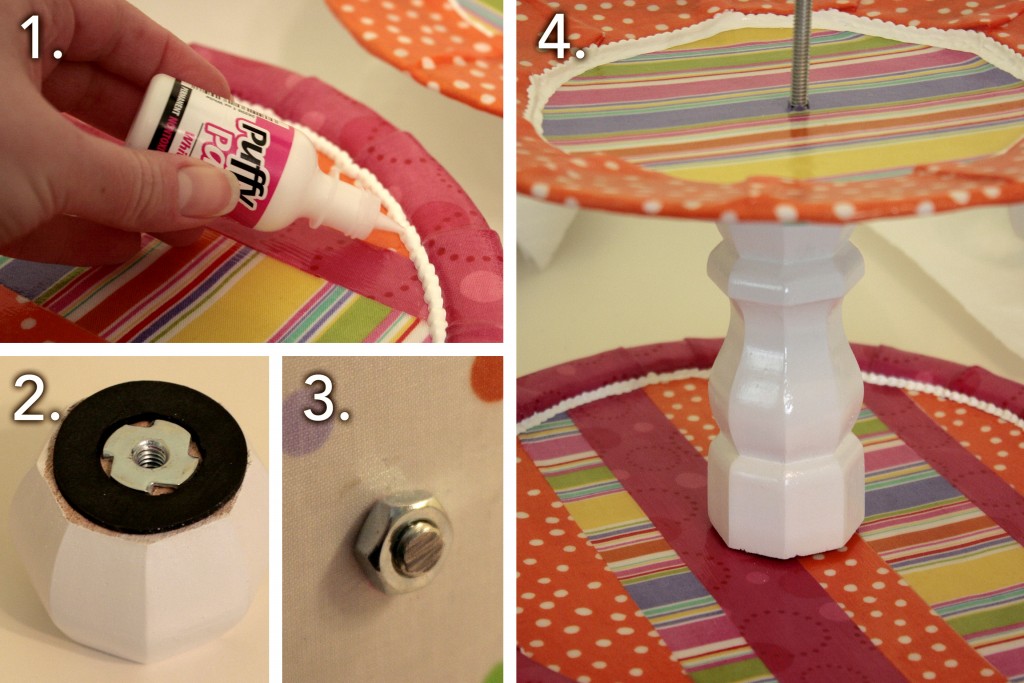This was my week 2 entry for One Month to Win It contest. Thanks to all those that voted! The contest started with 12 contestants and each week 3 are voted off. I just found out that I not only made it to week 3, but I was the winner for week 2 with this entry! Besides sewing and crafting I also really enjoy baking (yes, I did make the cupcakes above). So I decided to make myself a spring/Easter inspired tiered dessert tray using Mod Podge, which was the required item for the contest this week. This ended up being a lot more work than I was expecting so I came up with an easy method option for those without access to a workshop. The great thing about making one of these is that you can customize it for a special event or match it to your decor. And if you don't bake you can always use it for displaying decorative items!
Easy way: Buy melamine plates and short (around 6") table legs or candlesticks. Paint the table legs or candlesticks if necessary. Use epoxy to glue it all together. Our local Target has a nice selection of everyday and seasonal melamine plates and bowls that can be individually purchased. I think this would be fun with a bowl as the top piece that you could fill with M & Ms, nuts or candies.
Hard way (also known as the way I did it):
Materials list: one 8 oz. jar outdoor Mod Podge, three ceramic plates, two 6" table legs, one can of white enamel spray paint, one piece of 1/4" all thread, one 1/4" bolt that fits the all thread, one 1/4" T nut (it's the lower left item in the photo), a rubber washer, enough fabric to cover your plates, six self- stick 1/4" rubber feet (or three 1/2" if you can find them), 1 bottle white puffy paint
Other supplies: pliers (depending on your table legs), drill, 5/16" ceramic bit, wood saw (optional to trim down table legs), hacksawThe photo below shows my plates (I started with two of each just in case any broke during drilling but none did) and the rubber washer, all thread, T nut, and bolt.
1. Remove any hardware from the table leg with pliers. 2. I cut the 2" ball off the top of one of my two 6" table legs with a wood saw. Then I drilled all the way through my 6" and 4" pieces, and drilled 3/4" into the bottom of the 2" ball. 3. Drill a 5/16" hole through the center of each plate (the photo shows only partway drilled through). Make sure to wear eye protection and a breathing mask to protect you from ceramic bits and dust. 4. Hammer the T nut into the bottom of the ball.
For the bottom plate 1. Brush the bottom of the plate with Mod Podge 2. Position strips of fabric touching but not overlapping 3. Brush on a heavy coat of Mod Podge so you don't disturb the edges of the fabric and cause them to fray 4. Use an x-acto to trim excess fabric.
Now stand back and admire your work! The outdoor Mod Podge is wipeable and water resistant so with a thick enough layer covering the fabric this should hold up well to food serving. Both the Mod Podge and puffy paint are non-toxic.

